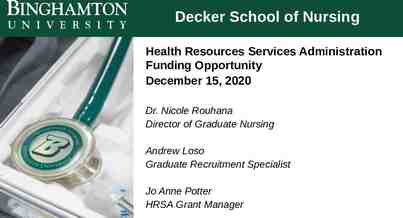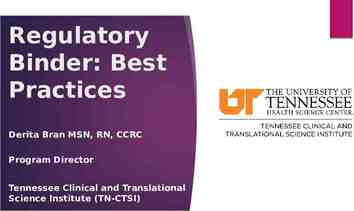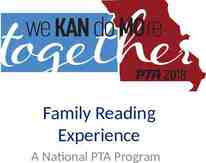Child Protection (CP) and Safeguarding Training September 2018
46 Slides1.18 MB

Child Protection (CP) and Safeguarding Training September 2018

Learning Agreement: Keep confidentiality; Be aware of sensitive and emotive material; Ask questions; Respect each other’s views; Ensure mobile phones are on silent;

Learning aims: To raise awareness regarding child protection and safeguarding; To assist in recognising the signs and symptoms of abuse and neglect; To ensure everyone knows how to raise concerns regarding a child;

Keeping Children safe in Education 2018 This is statutory guidance from the DfE issued under Section 175 of the Education Act 2002, the Education (Independent School Standards) Regulations 2014, and the Non-Maintained Special Schools (England) Regulations 2015. Schools in England must have regard to it when carrying out their duties to safeguard and promote the welfare of children. For the purposes of this guidance children includes everyone under the age of 18. It is your responsibility to read the guidance!

The Legalities: Local authorities have overarching responsibility for safeguarding and promoting the welfare of all children and young people in their area. They have a number of statutory functions under the 1989 and 2004 Children Acts. This includes specific duties in relation to children in need and children suffering, or likely to suffer, significant harm, regardless of where they are found, under sections 17 and 47 of the Children Act 1989.

CP Team – 2018-2019 Elisabeth Wigley - The Designated Safeguarding Lead Elizabeth Wigley – Designated Soo Bishop - Deputy DSL Safeguarding Lead Soo Bishop Deputy Safeguarding Lead

Know your Safeguarding procedures Staff have a concern about a child’s welfare or receive a disclosure from a child On a School site MMF – Music Centre Report directly to the Headteacher or Designated Safeguarding Lead before you leave the school site Write a statement of the disclosure and copy for MMF Follow up by reporting to MMF on the same day Report directly to the named person On-Call Write a statement detailing the disclosure before you leave the site to give to the member of staff

You all have a right to be safe. You don't have to keep a secret about being hurt. You don't have to deal with this on your own. The message We believe in keeping you safe. Everyone in your school will help you to feel safe, and we will help you. It's not your fault — whoever's hurting you, or your friends are to blame. Tell someone you can trust about what's happening. Your friends, parents, teachers or family may be able to help you.

Safeguarding is Everyone’s Responsibility

Good behaviour management Anti-bullying Child ProtectionEducation transition Attendance, exclusions & children missing SEN and inclusion A ‘listening’ school CASA Governance Keep -safe work Whistleblowing Signs of Wellbeing Health and Safety Healthy relationship work Early Help Safeguarding Training E-safety (Once a Staff code of conduct & safer working practice year for staff)

Keeping Children safe in Education Indicators of abuse and neglect: Abuse: a form of maltreatment of a child. Somebody may abuse or neglect a child by inflicting harm or by failing to act to prevent harm. Children may be abused in a family or in an institutional or community setting by those known to them or, more rarely, by others. Abuse can take place wholly online, or technology may be used to facilitate offline abuse. They may be abused by an adult or adults or by another child or children. Physical abuse: a form of abuse which may involve hitting, shaking, throwing, poisoning, burning or scalding, drowning, suffocating or otherwise causing physical harm to a child. Physical harm may also be caused when a parent or carer fabricates the symptoms of, or deliberately induces, illness in a child.

Keeping Children safe in Education Indicators of abuse and neglect: Emotional abuse: the persistent emotional maltreatment of a child such as to cause severe and adverse effects on the child’s emotional development. It may involve conveying to a child that they are worthless or unloved, inadequate, or valued only insofar as they meet the needs of another person. It may include not giving the child opportunities to express their views, deliberately silencing them or ‘making fun’ of what they say or how they communicate. It may feature age or developmentally inappropriate expectations being imposed on children. These may include interactions that are beyond a child’s developmental capability as well as overprotection and limitation of exploration and learning, or preventing the child from participating in normal social interaction. It may involve seeing or hearing the ill-treatment of another. It may involve serious bullying (including cyberbullying), causing children frequently to feel frightened or in danger, or the exploitation or corruption of children. Some level of emotional abuse is involved in all types of maltreatment of a child, although it may occur alone.

Keeping Children safe in Education Indicators of abuse and neglect: Sexual abuse: involves forcing or enticing a child or young person to take part in sexual activities, not necessarily involving a high level of violence, whether or not the child is aware of what is happening. The activities may involve physical contact, including assault by penetration (for example rape or oral sex) or nonpenetrative acts such as masturbation, kissing, rubbing and touching outside of clothing. They may also include non-contact activities, such as involving children in looking at, or in the production of, sexual images, watching sexual activities, encouraging children to behave in sexually inappropriate ways, or grooming a child in preparation for abuse. Sexual abuse can take place online, and technology can be used to facilitate offline abuse. Sexual abuse is not solely perpetrated by adult males. Women can also commit acts of sexual abuse, as can other children. The sexual abuse of children by other children is a specific safeguarding issue in education

Keeping Children safe in Education Indicators of abuse and neglect: Neglect: the persistent failure to meet a child’s basic physical and/or psychological needs, likely to result in the serious impairment of the child’s health or development. Neglect may occur during pregnancy, for example, as a result of maternal substance abuse. Once a child is born, neglect may involve a parent or carer failing to: provide adequate food, clothing and shelter (including exclusion from home or abandonment); protect a child from physical and emotional harm or danger; ensure adequate supervision (including the use of inadequate care-givers); or ensure access to appropriate medical care or treatment. It may also include neglect of, or unresponsiveness to, a child’s basic emotional needs.

Keeping Children safe in Education Specific safeguarding issues: Safeguarding incidents and/or behaviours can be associated with factors outside the school and/or can occur between children outside the school. All staff, but especially the DSL (or deputy) should be considering the context within which such incidents and/or behaviours occur. This is known as contextual safeguarding, which simply means assessments of children should consider whether wider environmental factors are present in a child’s life that are a threat to their safety and/or welfare. Children’s social care assessments should consider such factors so it is important that schools provide as much information as possible as part of the referral process. This will allow any assessment to consider all the available evidence and the full context of any abuse. Additional information regarding contextual safeguarding is available here: https://contextualsafeguarding.org.uk/about/what-is-contextualsafeguarding

Keeping Children safe in Education Children in need: A child in need is defined under the Children Act 1989 as a child who is unlikely to achieve or maintain a reasonable level of health or development, or whose health and development is likely to be significantly or further impaired, without the provision of services; or a child who is disabled. Local authorities are required to provide services for children in need for the purposes of safeguarding and promoting their welfare. Children in need may be assessed under section 17 of the Children Act 1989.

Keeping Children safe in Education Children suffering or likely to suffer significant harm: Local authorities, with the help of other organisations as appropriate, have a duty to make enquires under section 47 of the Children Act 1989 if they have reasonable cause to suspect that a child is suffering, or is likely to suffer, significant harm. Such enquiries enable them to decide whether they should take any action to safeguard and promote the child’s welfare and must be initiated where there are concerns about maltreatment, including all forms of abuse and neglect, female genital mutilation or other so called honour based violence, and extra-familial threats like radicalisation and sexual exploitation.

Accidental and Non Accidental Injuries Forehead Forearm Bony Spine Nose Chin Hip Skull Cheek or side of face Knees Elbows Shin Ears Mouth Neck Eyes Shoulde r Upper or Inner Arms Chest

Early help Young Carers Family Support Workers Children ’s Centres Speech and Language TAC / TAF Meetings Youth Outreac Counsell ing h Services Adult Services School Nurse The Profession al Network Health Visitor Scho ol GP The Lead Professional A TAC or TAF Meeting can be called by any agency that has concerns about a child or young person with additional needs that they feel may require a response from more than one agency but without requiring statutory intervention. CASAs A common process to enable practitioners to undertake a Common Assessment, facilitating early identification of need and providing evidence to support a coordinated action plan for earlier intervention, support and appropriate service provision.

Gypsy, Roma and Traveller Children Looked After Child Excluded students and those at risk of exclusion Students with behaviour and attendance issues NRPF and Asylum seekers Vulnerab le Groups NEET Children with SEN/ Disabilities Young Carers Teenage Parents Young Offenders

Poverty, disadvantage or social exclusion History of Childhood Abuse Unmet aspirations or underachievement Personal Crisis or Identity Crisis Factors that May Contribute to Vulnerability Mental Health Conflict with or rejection by peer, faith, social group or family Drugs and Alcohol Experiences of criminality Discrimination Victim of, or witness to, Hate Crime

Making a referral to MASH Multi –Agency Safeguarding Hub Guide for Professionals Once we send in a referral we should expect a response within 24 hours – this is rare. If a child's life is at risk we pick up the phone – paperwork later! Any member of staff can make a referral to MASH

Signs and Indicators 23 23

Your role: If a child discloses an incident to you; listen to what is being said, make brief notes/ Stay calm and re-assuring/ Do not press them for details or ask leading questions. Please do not make any promises that you will keep the information to yourself; it is your duty to report the incident, as soon as possible/ on the day that it occurs Assure the student that they have done the right thing and you know how difficult it is to talk about such experiences.

What else do we need to be aware of?

Official definition of Child Sexual Exploitation Sexual exploitation of children and young people under 18 involves exploitative situations, contexts and relationships where young people (or a third person or persons) receive 'something' (e.g. food, accommodation, drugs, alcohol, cigarettes, affection, gifts, money) as a result of them performing, and/or another or others performing on them, sexual activities.

Female Genital Mutilation (FGM) FGM is a procedure where the female genitals are deliberately cut, injured or changed, but where there's no medical reason for this to be done. FGM is usually carried out on young girls between infancy and the age of 15, most commonly before puberty starts. It is illegal in the UK and is child abuse. It's very painful and can seriously harm the health of women and girls. It can also cause long-term problems with sex, childbirth and mental health. It's also known as "female circumcision" or "cutting", and by other terms such as sunna, gudniin, halalays, tahur, megrez and khitan, among others. .

Gangs and Youth Violence Young people join gangs for lots of different reasons which can include: Feeling part of something or having a feeling of belonging Feeling respected and important To be protected from bullying or other gangs Making money from crime or drugs Gaining status and feeling powerful Knife crime rose by 22% in 2017 594 under 18s received a caution in 2017 for carrying a knife 11% increase in firearm offences This year 51 people have been fatally stabbed in London – (18th July) There have been 1,296 stabbings; up to April 2018 according to the official statistics from the Met police County Lines

What is Peer on Peer Abuse? Children can abuse other children Can include and not limited to Bullying sexual violence, sexual harassment, sexting physical abuse to include hitting, kicking, shaking, biting, hair pulling Initiating/hazing (harassment) type violence and rituals

Mental Health ‘Mental illness and suicidal thoughts can affect anyone, of any age, of any background, at any time (NSPCC, 2018).’ Mental Health Worries for Children and Young People: Depression and Anxiety Suicidal Thoughts Self Harm What Can School Do? Advise parent/carer to make contact with their GP Provide support in school Tell the child/young person about Childline Childline talks to under 19’s online or over the telephone on 0800 1111 Child and adolescent mental health services (CAMHS)

Post Traumatic Stress Disorder Eating Disorder Separation Anxiety Depression/ anxiety Mental Health Specific Phobia Self harm/ suicide Bipolar Panic attacks

Mental health in the classroom

Prevent Duty On 1st July 2015 all schools became subject to a duty under section 26 of the Counter-Terrorism and Security Act 2015 to have “due regard” to the need to prevent people from being drawn into terrorism – This duty is known as the Prevent duty

Preventing radicalisation: Children are vulnerable to extremist ideology and radicalisation Extremism is the vocal or active opposition to our fundamental values, including the rule of law, individual liberty and the mutual respect and tolerance of different faiths and beliefs. This also includes calling for the death of members of the armed forces. Radicalisation refers to the process by which a person comes to support terrorism and extremist ideologies associated with terrorist groups.

Prevent The main aim of Prevent is to stop people from becoming terrorists or supporting terrorism At the heart of Prevent is safeguarding children and providing early intervention to protect and divert people away from being drawn into terrorist activity

What to look out for? students who isolate themselves from family and friends; talking as if from a scripted speech; unwillingness or inability to discuss their views; a sudden disrespectful attitude towards others; increased levels of anger; increased secretiveness, especially around internet use.

How do terrorist threat levels work? MI5: Threat level descriptions: LOW: means an attack is unlikely MODERATE: means an attack is possible but not likely SUBSTANTIAL: means an attack is a strong possibility SEVERE: means an attack is highly likely CRITICAL: means an attack is expected imminently

Sexual violence and sexual harassment between children in schools DfE: Issued Guidance: December 2017 We need to challenge sexulised behaviours and not dismiss as ‘banter’ A child under the age of ? can never consent to any sexual activity The age of consent is ?

DBS having a DBS makes you a trusted adult; you have a duty of care to report all incidents of concern about our students;

‘Sexual offences Act 2003 Abuse of position of trust - Sexual Activity with a child: it is an offence for a teacher or member of school staff to enter into a sexual relationship with a student under the Sexual Offences Act 2003 (England and Wales) the Sexual Offences Order 2008 (Northern Ireland) Sexual Offences Act 2009 (Scotland), and may carry a custodial sentence; if a student has left the school and there is evidence to suggest that an inappropriate relationship with a member of the school staff started while they were still a student, the teacher could face a professional misconduct panel hearing and subsequent ban from teaching.

Employers must refer someone to DBS if they: dismissed them because they harmed someone dismissed them or removed them from working in regulated activity because they might have harmed someone or acted inappropriately towards children were planning to dismiss them for either of these reasons, but they resigned first Please note – we are breaking the law if we don’t refer someone to DBS when we should

Mobile phones/Photography and ensure that you safeguard yourself: The Data Protection Act 2018 affects the use of recording images, as they are the personal data of each individual child. The Act states that consent must be obtained from the parent of a child for any images used by the school. This includes the school website or productions. Do not take, display or distribute images of students unless there is consent to do so, even if you want to model a technique to a student. Many primary schools have a no mobile policy in place – Know your schools procedures? Ensure that when you are given a room to use in a school that it has a window in it – if not ask for a change of area! When you are modelling to a student please be mindful and seek their consent before you touch them i.e. I am just going to move your hand, is that ok?

Whistle Blowing procedures: difficult to report another colleague; can make you feel isolated; can make you question your own mind however.you must do it; it is your moral and professional responsibility; Who do you report to? 1) Regarding a member of MMF staff: Elisabeth Wigley 2) If your concern is about Elisabeth. Please report directly to: Edward Hickman, Chair of Trustees: [email protected]

We are sometimes the only other people to observe/ have regular contact with the students We have to be observant and help to provide them with the help and support they require Always play safe – never become one who wishes they did!

Know your Safeguarding procedures Staff have a concern about a child’s welfare or receive a disclosure from a child On a School site MMF – Music Centre Report directly to the Headteacher or Designated Safeguarding Lead before you leave the school site Write a statement of the disclosure and make a copy Follow up by reporting to MMF DSL on the same day Report directly to the named person On-Call Write a statement detailing the disclosure before you leave the site to give to the member of staff







